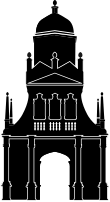Dr Alessandro Launaro
- College positions:
Fellow1975 College LecturerDirector of Studies in Classics
- University positions:
Associate Professor in Classics (Classical Art & Archaeology)
- Subjects: Classics
Degrees
Laurea (BA/MA) in Classical Archaeology (University of Pisa), PhD in Ancient History (University of Pisa)
Research interests
I am primarily interested in the long-term social-economic development of the Roman world, with a specific focus on the transformation of the urban and rural landscapes of Roman Italy. Having been extensively involved in a varied array of archaeological fieldwork in various parts of Italy (Liguria, Tuscany, Marche and Lazio), I am currently directing (together with Prof Martin Millett) an integrated research project (excavation, field survey and geophysical prospections) at the town of Interamna Lirenas (Southern Lazio).
Teaching interests
I teach a range of modules in Classical Art & Archaeology as part of the Classics course: from introductory courses (Prelim, Part IA) to more thematic ones (Part IB and Part II) about the archaeology of the Roman world. In terms of College teaching, I mainly supervise Art & Archaeology modules as well as Latin translation/composition for Prelim students, although from time to time I am also involved in supervising Part 1A Latin translation and Ancient History.
Selected publications
Books
2023 (with M. Millett) Interamna Lirenas: a Roman Town in Central Italy Revealed. Cambridge. [Open Access]
2011 Peasants and Slaves. The Rural Population of Roman Italy (200 BC to AD 100). Cambridge.
Articles/chapters
2022 (with S. Parisotto, N. Leone, and C.-B. Schönlieb). Unsupervised clustering of Roman potsherds via Variational Autoencoders. In Journal of Archaeological Science 142. [Open Access]
2020 (with J.R. Patterson). New epigraphic evidence from the Roman town of Interamna Lirenas (Central Italy). In Epigraphica 82: 213-241.
2020 (with M. Millett, L. Verdonck and F. Vermeulen). Falerii Novi: the Ground-penetrating Radar survey of a Roman city. In Antiquity 94 (375): 705–723.
2019 Interamna Lirenas – a history of 'success'? Long-term trajectories across town and countryside (4th c. BC to 5th c. AD). In A.U. De Giorgi (eds.), Cosa and the Colonial Landscape of Republican Italy (Third and Second Century BC). Ann Arbor. 119-138.
2018 (with N. Leone) A view from the margin? Roman commonwares and patterns of distribution and consumption at Interamna Lirenas (Lazio). In Journal of Roman Archaeology 31: 323-338.
2017 Something old, something new: social and economic developments in the countryside of Roman Italy between Republic and Empire. In T. de Haas and G. Tol (eds.), The Economic Integration of Roman Italy: Rural Communities in a Globalizing World. Leiden. 85-111.
2016 Finley and the Ancient Economy. In D. Jew, R. Osborne and M. Scott (eds.), M.I. Finley: An Ancient Historian and His Impact. Cambridge. 227-249
2016 The economic impact of Flavian rule. In A. Zissos (eds.), Blackwell’s Companion to the Flavian Age of Imperial Rome. Oxford. 189-206.
2015 The nature of the villa economy. In P. Erdkamp, K. Verboven and A. Zuiderhoek (eds.), Ownership and Exploitation of Land and Natural Resources in the Roman World. Oxford. 173-186.
2014 (with G.R. Bellini and M.J. Millett) Roman colonial landscapes: Interamna Lirenas and its territory through Antiquity. In J. Pelgrom and T. Stek (eds.), Roman Republican Colonisation: New Perspectives from Archaeology and Ancient History. Rome. 255-275.
2011 Investing in the countryside: villas and farms, landowners and tenants (200 BC to 100 AD). In FACTA – A Journal of Roman Material Culture Studies 5: 129-143.
2009 La Val Polcevera dalla seconda Età del Ferro alla fine dell’Evo Antico. In Rivista di Studi Liguri 72/73: 5-34.
2004 Experienced landscapes through intentional sources. In B. Croxford et al. (eds.), TRAC 2003. Proceedings of the Thirteenth Annual Theoretical Roman Archaeology Conference. Oxford. 111-122.
Other interests
All those kinds of things that back in my day were considered typical of a ‘nerd’, although these days are often considered ‘cool’ (?!).
